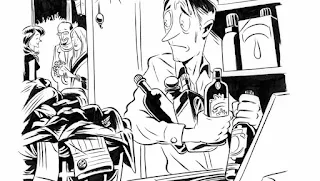We’re not just talking about good beer; we are talking about great beer. Beer that makes people collect empty bottles and cans once they finish the contents inside and keep them in their cupboard to look at every once in a while in fond remembrance. (What? You don’t do that?)
I certainly did with Guinness, that beauty of a beer which even has its own pouring method. I remember some old English chappy telling me as I called for a Guinness at a pub in London “You like Guinness eh? That stuff will put hair on your chest if you don’t have any and will take it off if you do” If they only served Guinness or Kilkenny (made by the same company) on tap in India we would be a much less hairy lot.
Kings from Goa, not only because it’s great, but because anyone who has ever been to Goa has had a gazillion of them with the ability of having a gazillion more - and that’s just for breakfast. I love it because of the bottle shape, because I have never had one that does not have sand encrusted at the bottom of the bottle and because the owners of Kings don’t think much of mass production and sales and focus on quality.
Leffe is a personal favourite amongst beers available in India. Stella Artois from the same motherland - Belgium is fantastic as well. When speaking of Belgium beers one cannot forget the “Trappist’ beers which are brewed within a Trappist monastery under the supervision of the monks themselves. Trappist beers to look out for are Orval, Achel, Rochefort, Westvleterenand, Westmalle and of course Chimay. They make beer to maintain the monastery and whatever is extra- goes to charity. So it’s drinking for a good cause, I will have three, bartender!
The Germans know their Riesling and they know their beer. They produce my favourite beer, Augustiner which is made in Bavaria a state in Germany. It’s special because they do not advertise, make small quantities of absolute classic beer, are intent on keeping their tradition alive and host one of the tents at Oktoberfest. Bavaria is also responsible for beers like Paulaner, Spaten, Hacker-Pschorr,Löwenbräu and Hofbräu.
Czech Republic is famous for producing beer and a Czech beer I highly recommend is Kozel. I suggest you do it right- jump on a plane to Prague, and find yourself a quaint little beer bar where the locals hang out. Other famous brands include Budweiser / Budvar(not to be confused with the American brand of the same name),Velke Popovice and Staropramen.
A lot of the best beers in the States are produced by small companies who focus on quality rather than quality. In the states, microbreweries are responsible for many fantastic beers. Two beers to definitely try are Anchor Stream from San Francisco orFat Tire of the New Belgium Brewing Company.
All this talk of beer has made me thirsty for one, and as my friend in Germany would say, "It's beer o'clock."
source:http://www.gqindia.com








